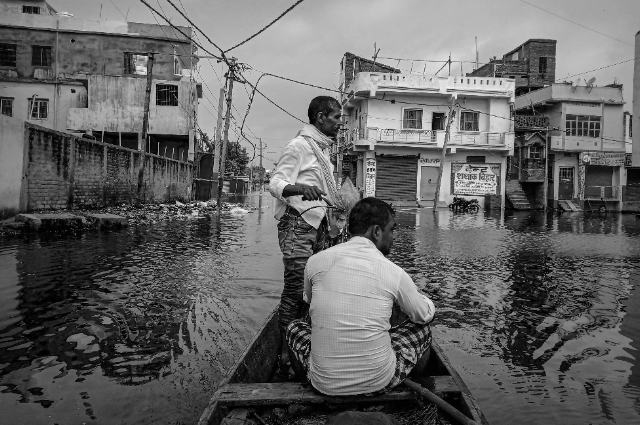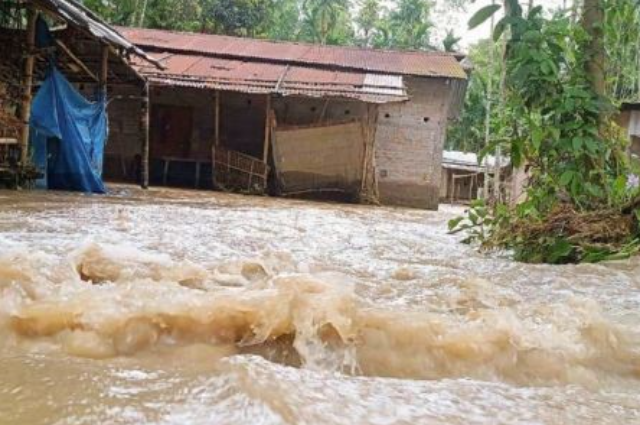
Photo by Deepak Kumar on Unsplash
Introduction
Rainy seasons are a double-edged sword. While they bring much-needed relief to drought-stricken regions, they can also spell disaster in the form of floods. For many communities worldwide, floods are an annual nightmare during the rainy season. The question arises: is the government failing in its duty to mitigate the impact of flooding, and what are the underlying reasons for this recurring problem? This reflection will explore the causes of flooding in rainy seasons, assess the government's role in flood prevention, and propose potential remedies.
1. The Causes of Flooding In Rainy Seasons
To understand why floods, occur during rainy seasons, it is essential to consider the various factors contributing to this natural disaster. These factors can be divided into two main categories: natural and human-induced.
1.1 Natural Factors
- Heavy Rainfall: The most obvious cause of flooding during the rainy season is excessive rainfall. When heavy rain occurs over a short period, the ground becomes saturated, and rivers and water bodies may overflow their banks.
- Topography: The geographical landscape plays a significant role. Areas with low-lying terrain and poor drainage systems are more susceptible to flooding. River valleys and coastal regions are particularly vulnerable.
1.2 Human-Induced Factors
- Deforestation: The removal of trees and vegetation disrupts the natural balance of the ecosystem. Trees and plants help absorb rainfall, reducing runoff. Deforestation, often due to urbanization and agriculture, increases surface water flow, leading to more floods.
- Inadequate Urban Planning: Rapid urbanization often results in the creation of impermeable surfaces such as concrete and asphalt. This leads to increased surface runoff, as rainwater cannot infiltrate the ground. Poor urban planning and improper drainage systems exacerbate flooding in cities.
- Dams and Reservoirs: While dams and reservoirs are designed to control water flow, improper management can lead to unintended consequences. Sudden releases of water from dams can result in downstream flooding.
2. The Role of Government in Flood Prevention

Governments play a crucial role in mitigating and responding to floods during rainy seasons. However, the effectiveness of their efforts can vary significantly. Here, we assess the government’s responsibilities and areas where they might be falling short.
2.1 Early Warning Systems
One of the primary responsibilities of government agencies is to establish and maintain early warning systems. These systems should include weather forecasting, river level monitoring, and communication mechanisms to alert communities at risk. In many cases, these systems work well, providing timely information to the public. However, some regions, particularly in developing countries, lack the necessary infrastructure for effective early warning.
2.2 Infrastructure Development
Governments are also tasked with building and maintaining infrastructure that helps prevent flooding. This includes constructing and maintaining dams, levees, and reservoirs, as well as improving drainage systems. The quality and effectiveness of these infrastructure projects can vary widely. In some cases, lack of maintenance and inadequate design can lead to infrastructure failures during floods.
2.3 Land Use Planning
Urban planning and land use regulations are within the government’s purview. Effective planning can reduce the impact of flooding in cities. However, governments often struggle to enforce zoning laws and regulations. Rapid urbanization and informal settlements can make it challenging to control construction in flood-prone areas.
2.4 Disaster Response and Relief
Governments are responsible for disaster response and relief efforts during and after floods. This includes coordinating rescue operations, providing shelter, food, and medical assistance, and assisting in recovery and rebuilding. In some instances, the government’s response to floods is criticized for being slow or inadequate.
3. Is the Government Failing In Flood Prevention?
The question of whether the government is failing in flood prevention is a complex one. While some governments perform admirably in their efforts to mitigate floods, others fall short. The following factors can contribute to the perception of government failure:
3.1 Lack of Resources
Many governments, particularly in developing countries, struggle with limited resources. Insufficient funding for infrastructure development, early warning systems, and disaster response can hinder effective flood prevention.
3.2 Corruption
Corruption within government agencies can divert resources away from flood prevention efforts and infrastructure projects. This misallocation of resources can significantly impede a government’s ability to protect its citizens from floods.
3.3 Lack of Political Will
Political will is critical for addressing flood prevention. In some cases, governments may prioritize short-term economic interests over long-term flood mitigation. This can result in poor land use planning and infrastructure development.
3.4 Insufficient Public Awareness
Government efforts are more effective when the public is aware of the risks and actively participates in flood prevention. Lack of awareness can hinder disaster preparedness and response.
4. Remedies for Flooding in Rainy Seasons
While addressing the complex issue of flooding during rainy seasons requires a multi-faceted approach, several key remedies can help mitigate the problem:
4.1 Improved Infrastructure
Investing in robust infrastructure, including well-maintained dams, levees, and drainage systems, is crucial for flood prevention. Governments should allocate sufficient resources and prioritize infrastructure development.
4.2 Effective Early Warning Systems
Governments must enhance their early warning systems, ensuring that they reach vulnerable communities promptly. This includes investing in weather forecasting technology and communication infrastructure.
4.3 Land Use Planning and Zoning
Strict land use planning and zoning regulations can help limit construction in flood-prone areas. Governments should enforce these regulations and work to relocate informal settlements to safer locations.
4.4 Public Awareness and Education
Government agencies should engage in public awareness campaigns to educate citizens about flood risks, preparedness, and response. Informed communities are better equipped to protect themselves during floods.
4.5 International Cooperation
Floods often transcend national borders. International cooperation in sharing weather data, river flow information, and disaster relief can help reduce the impact of floods and improve responses.
Conclusion

Flooding during rainy seasons is a recurrent issue that affects communities around the world. The causes of flooding are multifaceted, involving both natural and human-induced factors. Governments have a critical role to play in flood prevention, including early warning systems, infrastructure development, land use planning, and disaster response.
While government failures in flood prevention are evident in some regions, challenges such as resource constraints, corruption, and a lack of political will can hinder their efforts. To address these issues, remedies must focus on infrastructure improvement, early warning systems, land use planning, public awareness, and international cooperation. A comprehensive approach is necessary to reduce the devastating impact of floods during rainy seasons and protect vulnerable communities.
